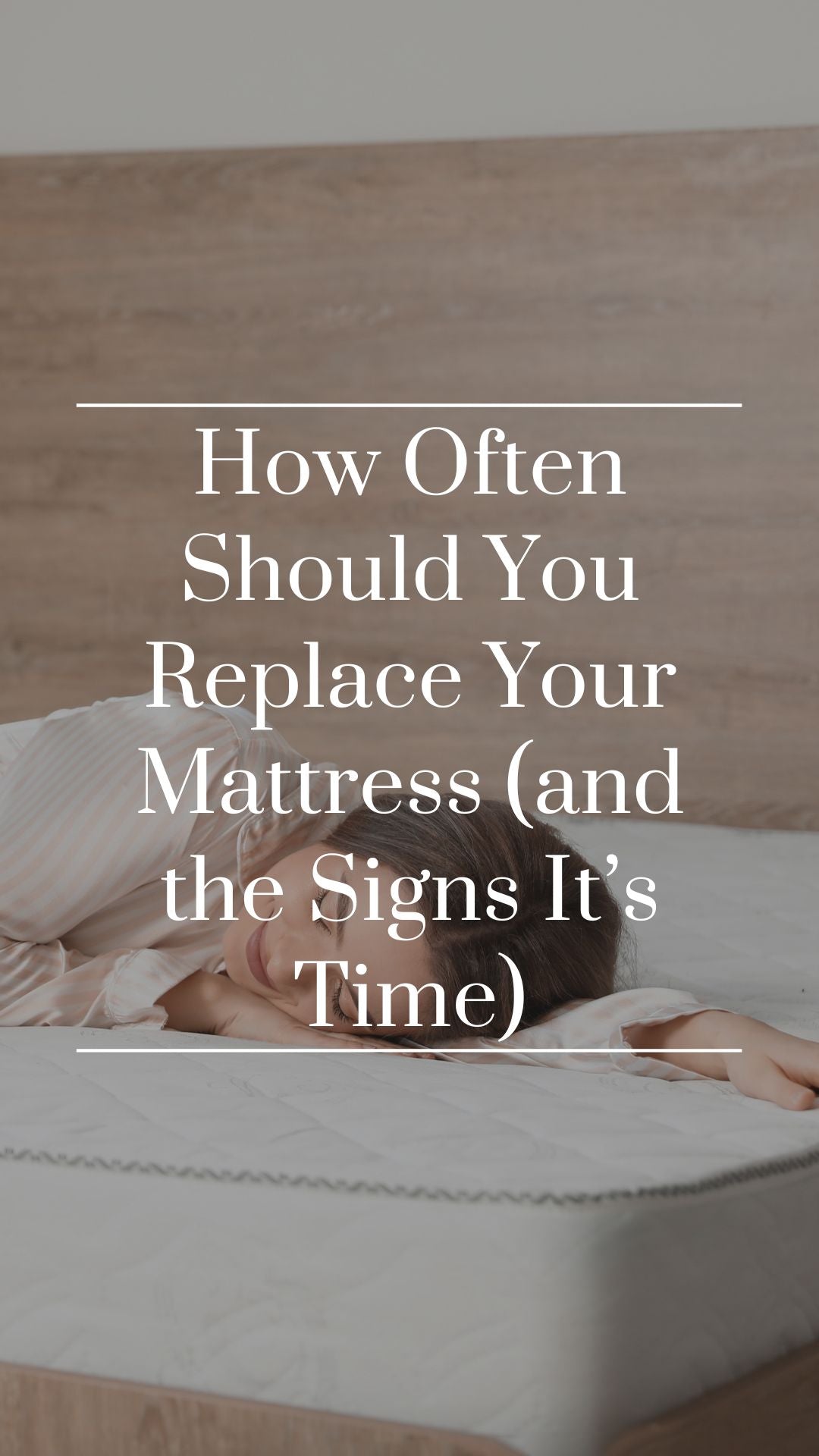
How Often Should You Replace Your Mattress (and the Signs It’s Time)
Share
We often think about upgrading our pillows or changing the duvet when we’re not sleeping well—but what about the mattress? Knowing how often to replace your mattress is key to better sleep, proper back support, and even better overall health. This guide will walk you through how long a mattress should last, what signs to look for, and how to choose the right one when it's time for a new one.
How Long Should a Mattress Last?
The general rule of thumb is that a good quality mattress should be replaced every 7–10 years, depending on the type and how well it’s looked after. But that’s not a one-size-fits-all answer—different materials age differently, and lifestyle factors matter too.
Let’s break it down by mattress type:
- Memory Foam Mattresses: These typically last 7–9 years. Over time, foam softens and becomes less responsive, which can impact your spinal alignment.
- Spring Mattresses (Open Coil): Tend to wear out faster, around 5–7 years, as the springs lose their bounce and support.
- Pocket Spring Mattresses: Higher-quality models can last up to 10 years, thanks to individual spring support and durability.
- Hybrid Mattresses: These combine foam and springs, usually lasting around 8–10 years depending on construction.
- Latex Mattresses: The most durable of the lot—some natural latex mattresses can last up to 12 years with proper care.
Why Mattress Lifespan Matters
The longer you sleep on an ageing or worn-out mattress, the more it can negatively impact your sleep quality, posture, and even long-term physical health. Your mattress is not just a comfort item—it’s a key part of your daily recovery.
Top Signs You Need a New Mattress
So, how do you know when it’s time to say goodbye to your current mattress? Here are the most common signs:
1. Visible Sagging or Indentations
If you notice visible dips, lumps or the mattress doesn't spring back when you press it—it's time. Sagging is a sure sign that the materials are no longer offering proper support.
2. Waking Up With Aches and Pains
Experiencing stiffness in your lower back or shoulders? Your mattress might be misaligning your spine throughout the night.
3. You Sleep Better Elsewhere
If you get a better night’s sleep on a hotel bed or even your sofa, it's a clear red flag. Your body knows the difference.
4. Increased Allergy Symptoms
Old mattresses can accumulate dust mites, allergens and moisture—especially if it's over 8 years old. If you're sneezing or waking up congested, your mattress could be part of the problem.
5. Noise or Creaking
If your mattress or base creaks when you move, it may indicate worn-out springs or structural issues.
6. Your Lifestyle Has Changed
Weight changes, new sleep partners, or health issues like back pain may mean your old mattress no longer suits your needs—even if it’s not that old.
How to Prolong Your Mattress Lifespan
Not quite ready to replace it? These tips will help you stretch a few extra years out of your mattress:
- Use a mattress protector to guard against spills, dust and allergens.
- Rotate it regularly (unless it’s a “no-turn” design) to prevent uneven wear.
- Keep it on a supportive base to maintain structure.
- Vacuum it periodically to remove dust and allergens.
- Avoid jumping or putting excessive pressure on the edges.
When to Replace Specific Mattress Types
| Mattress Type | Lifespan | Key Signs It’s Time |
|---|---|---|
| Memory Foam | 7–9 years | Sagging, loss of contour |
| Pocket Spring | 8–10 years | Noisy springs, less support |
| Open Coil (Standard Spring) | 5–7 years | Creaks, pressure points |
| Hybrid | 8–10 years | Sagging, foam softening |
| Latex (Natural) | Up to 12 years | Less bounce, firmness loss |
How Replacing Your Mattress Can Improve Your Sleep
Making the switch to a newer mattress can:
- Improve spinal alignment and reduce pain
- Increase sleep quality and reduce tossing and turning
- Lower allergy flare-ups with cleaner, newer materials
- Support your preferred sleep position with the right firmness and feel
Choosing a Replacement: What Should You Look For?
Here’s what to consider when shopping for your next mattress:
Your Sleep Style
- Side sleepers: Go for soft to medium for pressure relief on shoulders and hips.
- Back sleepers: Medium-firm for lumbar support.
- Front sleepers: Firmer mattresses to keep the hips aligned.
Your Body Type
Heavier individuals often need firmer, more durable mattresses to maintain proper support.
Your Budget
You don’t need to spend thousands for comfort. Resti’s mattress collections start with:
- Resti Essential – for everyday comfort and great value
- Resti Comfort – mid-range support with extra features
- Resti Luxe – luxury feel with premium materials
Materials & Feel
Memory foam for contouring. Pocket springs for bounce. Hybrids for the best of both worlds.




